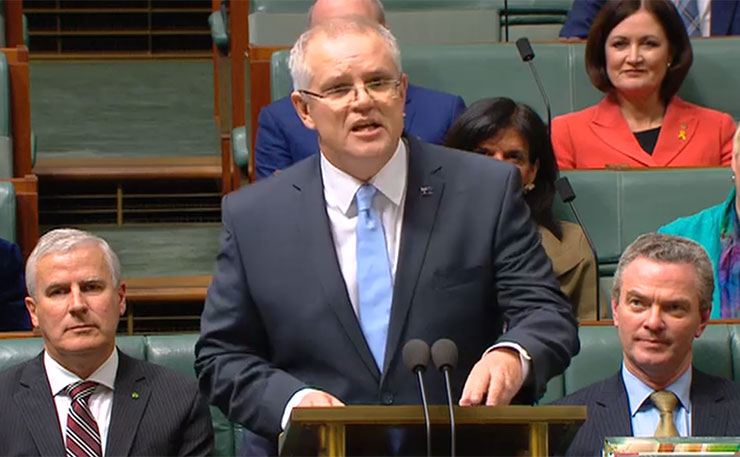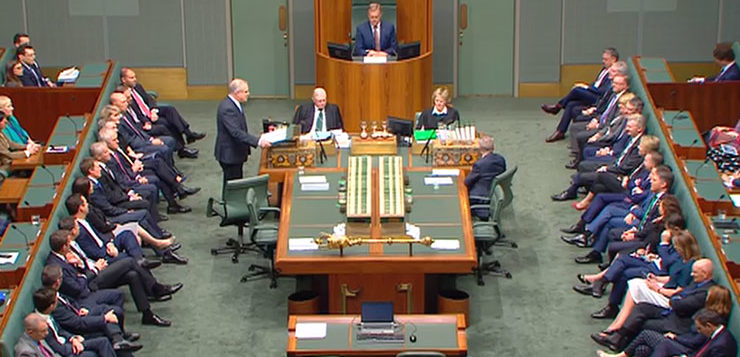The government’s hoped for budget bounce has not transpired. Economist with the Australian Institute Jim Stanford explains why.
As the country gears up for a federal election, a diffuse but powerful sense of discontent has settled over middle Australia. For several years now, millions of lower- and middle-income Australians have confronted a gritty, precarious labour market. It’s a painful change from the heady 2000s, when jobs were plentiful and wage gains reliable.
Indeed, the unprecedented stagnation of wages since the investment boom peaked in 2012 is the most potent indicator of the sea change in fortunes for Australia’s battlers. Real wages have not grown at all since then – and for those in insecure jobs (including part-timers, casuals, and nominally self-employed gig workers) – incomes have declined. It’s been the worst five-year period for labour incomes since the Great Depression. And it’s the crucial ingredient in a simmering, volatile brew that will decide the outcome of the next election.
The potent politics of working-class disaffection were demonstrated by Donald Trump’s election and the Brexit vote in the U.K. And strategists of all political stripes are now casting wary eyes on how that latent frustration will be expressed here.
From the left, it’s fuelling the most ambitious wave of grass-roots activism since the protests that ushered John Howard from office in 2007. Last week’s mega-rally in Melbourne to ‘Change the Rules’ is a taste of what’s ahead, as unions and Labor both work to channel simmering anger among working class households.
But conservatives also see potential, and danger, in this mainstream disaffection. In fact, this was the main motivation for a clear rhetorical shift in Treasurer Scott Morrison’s 2018 federal budget delivered last week. Morrison knows working Australians are losing faith in the supposed trickle-down benefits of business tax cuts, budget restraint and free trade agreements. So he opted for a more direct appeal: the centrepiece of his budget is a plan to deliver some monetary relief directly to lower- and middle-income workers.
The optics may be politically astute. But Morrison has a fundamental problem: there isn’t nearly enough real value in his tax measures to meaningfully repair the ongoing damage of stagnant wages and job insecurity.

Consider a worker earning $60,000 per year. That’s a modest wage, but it’s still higher than both median employment earnings and median taxpayer income. Morrison’s tax plan will lift their annual disposable income by a maximum of $530 – once. It’s thus equivalent to a one-time 0.9 per cent ‘raise’.
The worker can’t get that 0.9 per cent raise every year, because taxes can’t be cut every year. Moreover, there is a quid pro quo: since taxes pay for the public services consumed by that worker and their family, it is reasonable to expect they will have to ultimately forego some services in return for a bit of up-front cash.
Indeed, the role of public goods and services (or the “social wage”) in the standard of living of Australians cannot be ignored in any discussion of taxes and incomes. Public services make up one-quarter of all goods and services consumed by Australians: private consumption currently totals slightly over $1 trillion per year, while public consumption adds another $330 billion. And since public consumption is distributed more equally than private consumption (which is naturally concentrated among the high-income households with most spending power), it’s even more important to the material living standards of low- and middle-income Australians. Therefore, tax cuts do not actually make individuals “richer”, so much as they transfer some consumption from collective to private forms.
At any rate, even accepting it at face value, Morrison’s one-time 0.9 per cent ‘raise’ cannot offset the escalating damage of frozen wages: basic maths make it impossible. Wages are currently growing at about two per cent per year, identical to price inflation (and hence delivering a real wage freeze).
Traditionally, Australian wages grew about twice as fast: between 3.5 and 4 per cent per year, equalling the combination of trend inflation (around the RBA’s 2.5 per cent target) plus ongoing labour productivity growth (1 per cent or more). So wages have been lagging 1.5 to 2 percentage points behind normal – year after year. Morrison’s ‘raise’ will offset half that gap, for just one year.
But it gets worse. If your income was so low that you didn’t pay income tax, you get nothing (since Morrison’s benefit is non-refundable). And the benefit is paid in one lump sum at the end of the year, so it won’t really assist weekly family budgeting.
Compare that short-term, mostly symbolic salve to how workers’ disposable incomes would be boosted by a return to normal wage increases. Over the four-year timeframe of the budget projection, cumulating 3.5 per cent wage increases would boost a $60,000 worker’s disposable income (net of incremental taxes) by almost $6000. That’s 11 times more than Morrison’s tax tweak. And that value escalates year after year, since (unlike tax cuts) annual wage increases compound over time.
So the government’s hope that its tax measures will dampen the flames of working class discontent will likely be disappointed. Even more challenging for the Coalition is the fact that the truly big tax savings (90 per cent of the planned total $140 billion) won’t come until after 2022 – at least two elections from now. And at that point, the serious money flows to high-income households who would be the main beneficiaries of Morrison’s surprising decision to abolish the 37 per cent tax bracket and move toward a flat tax system.
The coming election will be won by the party offering the most convincing vision for restoring the living standards of millions of working Australians. The Coalition’s tax plan won’t be nearly enough to do that.
Donate To New Matilda
New Matilda is a small, independent media outlet. We survive through reader contributions, and never losing a lawsuit. If you got something from this article, giving something back helps us to continue speaking truth to power. Every little bit counts.




